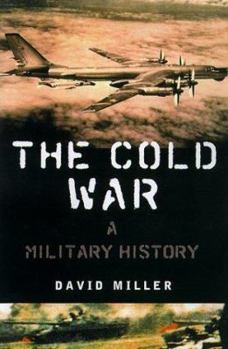The Cold War: A History
Select Format
Select Condition 
Book Overview
A preeminent Cold War scholar writes insightfully of the historic effects of the military build-up brought on by the Cold War and its concomitant effect on strategy. of photos. This description may be from another edition of this product.
Format:Hardcover
Language:English
ISBN:0312241836
ISBN13:9780312241834
Release Date:December 1999
Publisher:Thomas Dunne Books
Length:476 Pages
Weight:2.04 lbs.
Dimensions:1.6" x 6.5" x 9.6"
Customer Reviews
2 ratings
Title of Book is Misleading
Published by Thriftbooks.com User , 22 years ago
The author did a disservice to himself by incorrectly stating in the title of the book that it was a history of the cold war. The book is not, unlike the title might suggest, a history of the cold war. The book does not cover anything much outside of Europe and really does not touch on the political issues of the time. What the book does give you is a very detailed and interesting review of the U.S., NATO and Warsaw Pact equipment, base structure and high level battle strategies for a war in Europe. The author has done a good amount of research on these topics and presents a very readable rundown of this information. If you are interested in these topics, especially the details on the equipment used then this book can almost act as a reference book. Overall it is a good book, good level of detail and written in a readable fashion.
An Encyclopedia, Not a Narrative
Published by Thriftbooks.com User , 24 years ago
This book is more of an encyclopedic listing of major weapons systems deployed by the United States and the Soviet Union than a proper history. Such a reference is certainly needed and this one is pretty comprehensive. Unfortunately, what is really needed is a true encyclopedia, complete with photographs, diagrams and extensive cross-references. This book is not it. One gets the sense that Miller was originally trying to write something similar to the Janes series that he has worked on, but the publisher nixed the idea of a glossy, heavily illustrated reference book and wanted something that looked more like a conventional history.Miller does provide comprehensive coverage of the topic and provides a lot of interesting details. There are also many useful tables and appendices at the back of the book. Despite this wide-ranging coverage, however, Miller almost completely ignores the role of satellites during the Cold War. Although highly classified, they played significant roles in treaty verification and also improved stability. For instance, the "missile gap" of the early 1960s was eliminated by the first American reconnaissance satellites and as a result, the United States did not build thousands more ICBMs.One thing that bothered me was the limited references provided for the information. He has only a handful of references for each chapter, despite the fact that the chapters are packed with information. This makes it impossible to look up further information (or check the information in the book). Where, for instance, does Miller get the reliability rates for the Navy's Polaris missiles? That's a fascinating detail, but I wanted to read more about it. Yet he has only two footnotes for the entire chapter.






